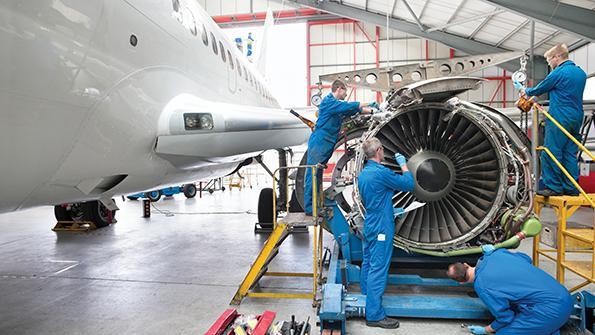Will MRO Labor Constraints Limit Industry Growth?

While fewer flights during the worst of the COVID-19 pandemic brought about a temporary respite for aviation’s ongoing labor shortage, the climb back to normal has exposed even larger gaps. The need for pilots is well known, but MRO is facing labor shortages that could keep planes from flying, as well.
In Oliver Wyman’s annual MRO Survey for 2022, which involved more than 150 executives from MROs, OEMs and carriers worldwide, a lack of technical staff was cited as the top disruptor for the industry over the next five years. Some 80% of North American respondents to our survey said that finding mechanics and technicians has become challenging, as well as 65% in Europe and 79% in other geographies.
MRO workers are nearly a decade older than the national average, and COVID-19 has brought about a bow wave of retirements. On top of this, fewer people appear to be interested in jobs in aviation, due to concerns about work environments, industry stability and perceptions of aviation as a “legacy” industry that is contributing to climate change and not meeting sustainability goals.
MROs also appear to be losing their edge as the “training ground” for newer technical staff, as carriers, who typically offer the highest wages, are taking on less experienced staff to fill their own needs. Of the MROs we surveyed, 85% reported finding it tough to find labor, compared to 65% of carriers.
No People, No Growth
As the industry rebounds from the pandemic and continues to contend with reduced demand and profitability, there is a renewed focus on cost containment. The tight technical labor market, however, is making controlling costs especially challenging. Thus far, one-third of respondents to our survey said they have had to raise wages; in North America, more than 35% of firms have had to raise wages in excess of 5%. On top of these increases, nearly 70% of survey respondents expect labor inflation of 4% or more in 2022-23.
While flight hours have yet to return fully to pre-pandemic levels, half of survey respondents said a lack of labor is already beginning to constrain their growth, particularly OEMs and MROs. North America, where utilization has returned to about 85-90% of normal traffic, is seeing the largest impact thus far.
The big question is whether aviation can broaden the pipeline for technicians and mechanics. Survey respondents said that apprentice programs and technical school partnerships have proven the most effective for recruitment to date. Compensation and changes to the work environment/shift structures have helped, as well, but since these are not differentiating changes, there is a strong probability that MROs will end up trading employees among themselves.
The industry also must work significantly harder and smarter to diversify the talent pool, through direct targeting of women and other groups who are underrepresented in the aviation labor force. Aviation must reach people earlier to expand technical school admissions. And it could develop international protocols to recognize credentials and licensing so that talent could move more easily between countries.
Over the longer term, industry executives we talked with at length know they need more creative tactics and messaging, particularly for younger generations coming into the labor market, who value quality of life and are concerned about industry sustainability. (For an in-depth perspective, see “The New People Shaping Our Future” on the Oliver Wyman Forum). Traditional methods and populations alone will not meet MRO talent needs, particularly if MROs are to keep costs under control.




